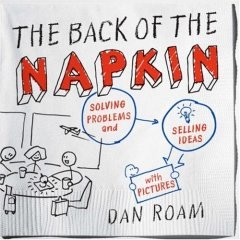 The Back of the Napkin by Dan Roam
The Back of the Napkin by Dan Roam
I ordered this book yesterday. I can often remember sketching out ideas on napkins–sometimes alone, at other times with team leaders. Often, those pictures led to insights that produced significant changes, or solved plaguing problems. I’m a believer in Roam’s philosophy: almost any problem can be made clearer with a picture. Fortunately, according to Roam, solving problems has absolutely nothing to do with drawing pictures or innate artistic ability. It’s has to do with forcing us to think visually.
Visual thinking means taking advantage of our innate ability to see – both with our eyes and with our mind’s eye – in order to discover ideas that are otherwise invisible, to develop those ideas quickly and intuitively, and then to share those ideas with other people in a way they simply "get."
The process of visual thinking is comprised of four steps, each of which we’re already good at. Looking, seeing, imagining and showing.

Do an experiment.
Take a problem you’re facing in building movements on your campus or location. For example, how do we build healthy missional teams? How do we raise up missional team leaders? What can we do to "passionately proclaim and compassionately demonstrate the gospel" in more effective ways?
Apply Roam’s Method: get some napkins, a pen and: look, see, imagine and show.
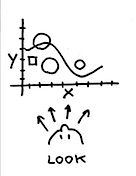
Look at your data, at your problem, at your opportunity:
* What is there?
* What is not there?
* What do you know?
* What do you not know?
* What does it look like?

See what it means:
* Do patterns emerge?
* Does anything stand out?
* Have you seen this before?
* Is it analagous to something else?
* Should you go look some more?
* Can you draw some conclusions?
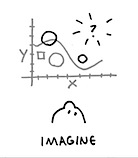
Use your mind’s eye (or a whiteboard or pen & paper or software) to imagine the possibilities:
* Are there analogies that make sense?
* Are there better ways to represent the patterns I saw?
* Is there a basic framework upon which I can hang what I’ve seen?
* Can I manipulate the patterns to create something new?
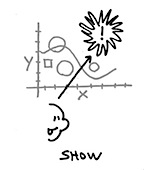
Show your insights to others (and help them draw their own conclusions):
* This is what I saw
* This is what I think it means
* Can you see the same things?
* Do you see something different?
* I recommend we do this; what do you think?
Try to get your audience to repeat the process: look, see, imagine…?
Now, as you work on your "show", use Roam’s 5 Squid Questions to force you to clarify your thinking:
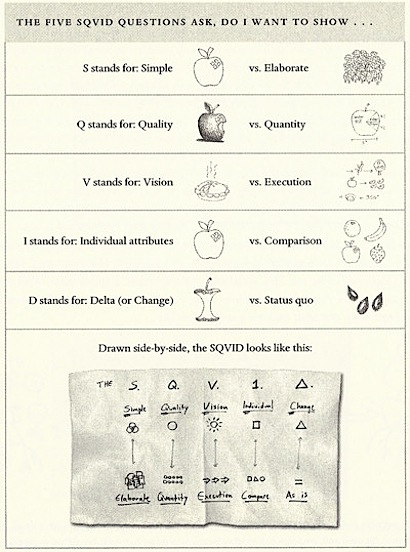
Leave a Reply